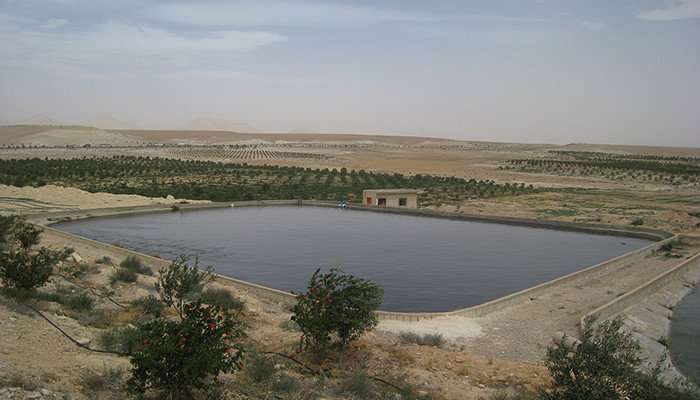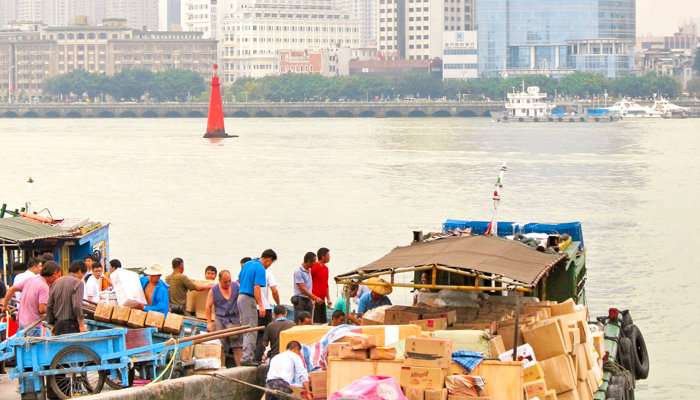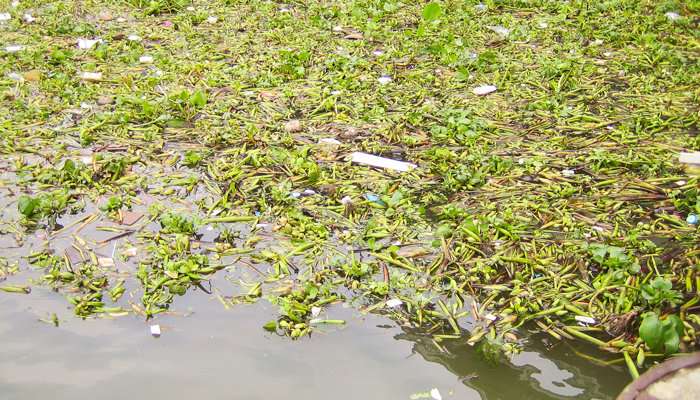Turning off the tap

In May 2018, South Africa's Cape Town may become the first city in the world to fully shut off its water.
The taps running dry for almost four million people would be a drastic consequence of population growth, uncontrolled water consumption and drought in recent years. Residents would have to collect their small daily water allowances from distribution points.
And, if you believe the forecasts, there's much worse to come. Climate change and population growth will make water shortages more common all over the world.
Estimates say that by 2040, half of the global population will live in regions with severe water shortages.
Water is becoming blue gold. It already is like that in many countries. According to Unesco, Saudi Arabia already uses 25% of the oil and gas it produces to power desalination facilities that turn seawater into potable water. The cost and the amount of emissions are enormous.
Water is a matter of life and death. One half of the world's hospital beds are taken by people who have fallen ill because of unclean drinking water. Water shortages drive people from their homes and lead to conflicts.
So why is it so difficult to solve the water crisis?
The issue of water relates to everything
If visitors from outer space were to examine the Earth, they might be surprised to hear that our blue planet suffers from water shortages. But the vast majority of the fluid that covers our ball of dirt is seawater, which isn't much use to us. Only three percent is freshwater, which can be drunk and used to irrigate crops.
Even this small percentage would be plenty for humanity if it were evenly distributed across the different regions, if the distribution network functioned effectively and reliably in all places, if rain fell on the fields in appropriate amounts and at the right times, if water were consumed sustainably without polluting reservoirs, and if efforts were also being taken to curb climate change, which makes droughts and storms worse.
That's a lot of ifs. The water question is difficult because it does not involve a single problem, which could be solved by, for example, adopting one new technology.
Instead, it consists of a bunch of different challenges associated with, among other things, population growth, climate conditions, ecosystem health, industrial and agricultural resource utilisation as well as sanitation and hygiene.
Many of the world's major development trends also involve the issue of water. China's eagerness to purchase land in Africa is partly driven by the goal of outsourcing food production as well as land and water use beyond its national boundaries. Control of limited water resources is also one way to prop up power structures.
Water is a key question in urban growth as well.
The world's growing population is flocking into cities, and this will lead to chaos unless functioning water and waste management processes are put in place. The construction of proper infrastructure calls for both capital and political will.
A chance to achieve real results
There's been no shortage of motivation, says Olli Varis, Professor of Water Resource Management at Aalto University, about his work.
Varis is an internationally recognised expert in the sustainable utilisation of water resources and other global water issues. For decades, he has engaged in practice-oriented research work especially in and around the Mekong River Basin in Southeast Asia.
Currently, Varis is taking part in, among other things, Aalto University's New Global project, which seeks to identify innovations that could tackle the world's major challenges.
His motivation is explained not only by the issue's importance, but also by the possibility of achieving real results.

"In East and Southeast Asia, you get the feeling that your work brings added value and benefits. Societies have the capacity and also a burning desire to receive new knowledge. For a researcher, it is motivating to have someone listen to what you have to say," Varis says.
In Southeast Asia, it is quite evident that water shortages are about more than just a concrete sparsity of water. The floods that afflict low-lying areas also lead to crises when polluted water mixes with cleaner water resources or when torrential downpours wash the fields of their nutrients.
It is easy to also see how big a role water plays in economic growth and urban development when examining East and Southeast Asia.
"Societies differ quite markedly from one another in their exposure to problems. The biggest problem for the rapidly developing Asian countries is, in my opinion, how to not ruin their environment when economic growth is rapid and population densities preposterous," Varis says.
Research data aids administration
One way to solve water crises is to generate research data. Large data banks on, for example, the behaviour, water quality and agricultural connections of the Mekong River as well as its impact on urban water supply have had a tangible positive impact on decision-making in various countries and areas.
Scientific knowledge, such as the modelling of a river's behaviour, can help prevent crises. The adverse effects of floods can be reduced with flood warning systems. Disputes regarding water use are easier to resolve when researched facts can be brought to the negotiation table.
Water flows without regard for national borders. The Mekong meanders through the territories of six countries. The more populations grow and urbanisation progresses, the harder the strain and use pressure on the world's water systems. Whether a country is located at the headwaters or downstream of a river can easily become an issue of crucial importance.
"China and Laos are building lots of dams and hydropower in the upper reaches of the Mekong, which makes the countries lying downstream unhappy. And disputes are not limited to just the national level. Farmers in all countries can take one side and resist dams, while urban dwellers and industries that need affordable electricity will consider the building of dams quite desirable," Varis says to describe the complexity of disputes.
Water wars and diplomacy
Some threat projections are dotted with water wars. If water shortages get worse, it may be that people will be ready to take up arms and violently compete for vital resources.
Simmering disputes are ever-present. Right now, at least twenty conflicts that relate to the utilisation of water resources are ongoing around the world. Egypt is quarrelling with Ethiopia about a major dam project on the Nile, while a couple of years ago India shut down trade crossing the Nepalese border partially because of reasons associated with water resource utilisation.
For this, we need water diplomacy, says Senior Water Adviser Antti Rautavaara from the Ministry for Foreign Affairs.
Water diplomacy has been practised around the world for ages. Finns have been actively involved in peace mediation and the negotiation of UN transboundary water treaties.
Antti Rautavaara's work includes advising the various departments of the Foreign Ministry about water issues and providing support for Finnish foreign affairs from the perspective of water supply. His remit is expansive. International water disputes, building lavatories in poor villages and water shortages caused by natural phenomena are some of the varied topics he deals with.
"Sometimes it makes most sense to prevent crises in collaboration with NGOs, sometimes through research cooperation and at other times by playing to role of mediator in a foreign policy question," Rautavaara says.
The Ministry for Foreign Affairs is also responsible for Finland's development cooperation, which involves solving issues like water supply in the world's poorer regions.
"Just over the last year and a half, we have provided a water supply for 1.3 million people and latrines for more than five million. This is about more than just comfort, as it enables hundreds of thousands of young children to survive instead of getting killed by diseases caused by poor hygiene," Rautavaara points out.
Solar-powered desalination
The taps being turned off in Cape Town gives rise to the question: where can we find more water now?

Espoo-based Solar Water Solutions is ready to provide one possible solution. The company has cooperated with Aalto University's Department of Energy Technology to develop water purification technology. Drought-stricken South Africa is one target for the firm while it seeks out initial business opportunities. CEO Antti Pohjola says that the devices manufactured by the company are the world's first to make seawater potable using only solar power.
There's lots of interest in solar power elsewhere, too, but it is difficult to create the steady pressure required for the treatment process with it, which is why the large desalination plants in the Middle East, for example, still burn fossil fuels.
At its Espoo facility, Solar Water Solutions manufactures smaller treatment devices suitable for producing 1–250 cubic metres of water per day. The company makes larger, container-type devices that can supply drinking water for a village, school or hotel, for example, while its smaller consumer products can, among other things, be used to make potable water in the archipelago.
Even flood water can be purified
Water technology is a hot sector, but most solutions are still small-scale and suitable for limited use. However, Antti Pohjola believes that there will be plenty of demand for small-scale water production as well as ancillary and backup water supply systems.
"In Africa especially, water supply is to a very large extent based on distributed solutions," he says.
Solar Water Solutions utilises a method called reverse osmosis. Put simply, the water passes through membranes that contain holes large enough to allow water molecules to pass, but which impurities like bacteria and salt cannot penetrate.
The same technique can be used to, for example, make well water or dirty flood water drinkable.
The growth prospects are so promising that the company is interested in recruiting students graduating from, for example, Aalto University into its production and international sales functions.
Their innovation is attracting interest in the Middle East as well. The company was one of three finalists in a United Arab Emirates design competition, which sought solutions for seawater desalination.
Price is a major obstacle for the proliferation of the company's wares. Smaller consumer products cost about €3,000, but the larger devices can go as high as €100,000.
Pohjola says that, over 15 years, the price of a water litre produced with one of their large devices comes to just 0.1 cent, so the investment pays for itself. However, many parties in the developing countries cannot access sufficient funding, and as NGOs, for example, typically operate with very tight budgets, the company is also developing a leasing option.
Food choices matter
Should you take shorter showers? We here in Finland have plenty of water, so a lot of people wonder how any water crisis could affect them.
Professor Olli Varis says how the Finns splash about with their water is of no consequence to the world's water situation as long as we take care of our own water supply. It is, of course, important to use hot water sparingly to conserve energy.
By contrast, we contribute quite clearly to the global water shortage as consumers of food and goods. A significant portion of our water consumption takes place outside of Finland, out of our own sight.
Everything that is produced for us has a water footprint. When you drink a cup of coffee, you're effectively also gulping down a 150 litres of water used to produce the coffee beans. Meat production consumes many times more water than plant cultivation, while rice is wasteful when compared to potatoes.
Food waste also involves squandering water on a massive scale. Agriculture accounts for 70% of freshwater consumption, and a third of the food produced winds up as wastage on fields, in storage, transport, shops or households. In Africa, agriculture is often inefficient, while in the West, waste mostly happens at the other end of the chain.
Estimates say that eliminating half of the world's food waste by 2030 would provide food for more than a billion people, thus making the utilisation of precious water much more efficient. This provides food for thought, as the numbers match the projected growth in the global population over the same period.
Provided by Aalto University


















